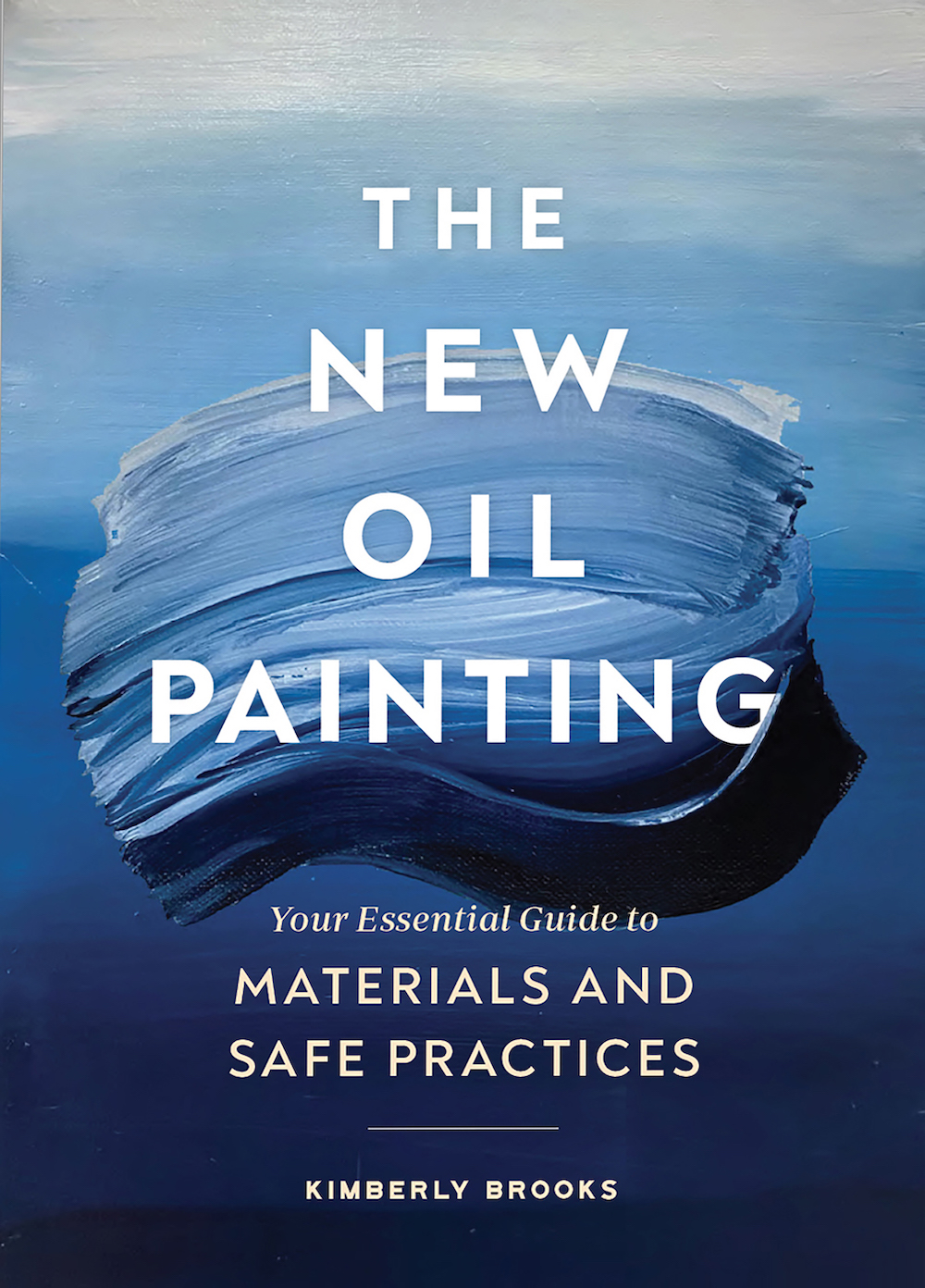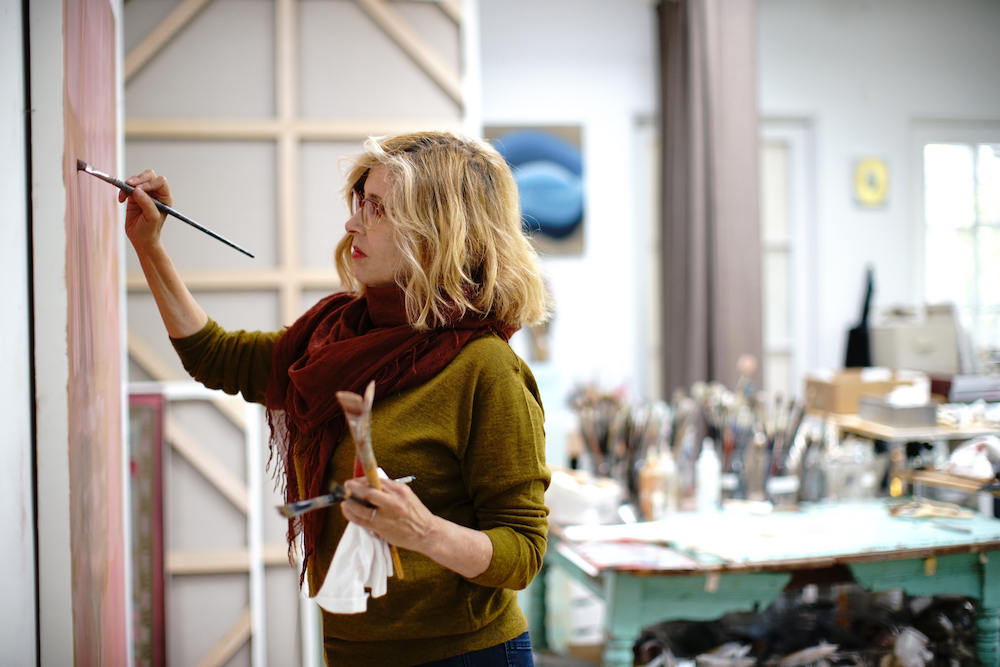The acorn never falls too far. At age 12, an enterprising artist stood in front of White on White, the Kazimir Malevich painting at MoMA NY. She tugged on her father’s sleeve and asked the surgeon, “What does it mean?” His answer inspired Kimberly Shlain Brooks toward a career in the arts. Her question sent Leonard Shlain on a decade-long inquiry which produced the 1991 bestseller, Art & Physics. Shlain dedicated his studies to the art of science; his daughter focused on the science of art. Her new illustrated book, which reveals safe practices for oil painters, may revolutionize the popularity of the once-hazardous medium.
ARTILLERY: You are a busy practicing and exhibiting artist. How long have you been painting and where has that taken you?
KIMBERLY BROOKS: I started painting when I was in college, spending the first five years painting the figure. I have moved through so many phases since then, from portraiture to landscape. As I enter my 30th year with the medium, I am flirting with abstraction. I have an exhibition this summer at Zevitas Marcus in Culver City.

Beyond the title of your new book, The New Oil Painting: Your Essential Guide to Materials and Safe Practices, what can we learn?
I think oil painting is one of the most misunderstood of all the art materials, the diva of all mediums. Most people think they need solvents. This, among other reasons, causes many artists to opt for acrylics. I longed for a little black book on oil painting, a basic understanding that had everything I needed to know, about the materials, as I use them. I conferred with scientists, conservators and historians. I wanted to make it easily accessible, so I illustrated it with drawings, and thanks to Chronicle Books I have color photography as well.
What prompted your research? How far did you investigate?
I used to have a studio in Venice. One hot day, when I had been painting with all the smelly stuff, I suddenly had trouble breathing. It really freaked me out. I knew I had done some kind of damage, but I didn’t know how long it had been brewing. I then spent the next year trying every other media on earth to see what would satisfy me. Nothing measured up to oil painting.
How far did I investigate? Exhaustively. I ultimately learned that you really don’t need all those fancy, toxic things. An experienced oil painter may balk. Hopefully that person will get the book and discover how beautiful and simple oil painting can really be if it’s used the way science, not history, recommends.

Photo by Stebs Schinerrer
Acrylic or oil? Your thesis challenges the choice most artists have made. Thoughts?
Definitely oil. I think acrylic can be fine for very geometric work but I don’t like the way it dries so flat and fast. For me, it is not as sensual.
All of your many projects are redefining the term “synergy.” What is First Person Artist?
First Person Artist is an interview platform where I talk with notable artists and we answer questions from the audience. During the pandemic, I started hosting “Fireside Chats” and “Vampire Cocktail Hours,” where we gather to look at art online. If any readers are interested in attending the next event, they can sign up at Firstpersonartist.com.


